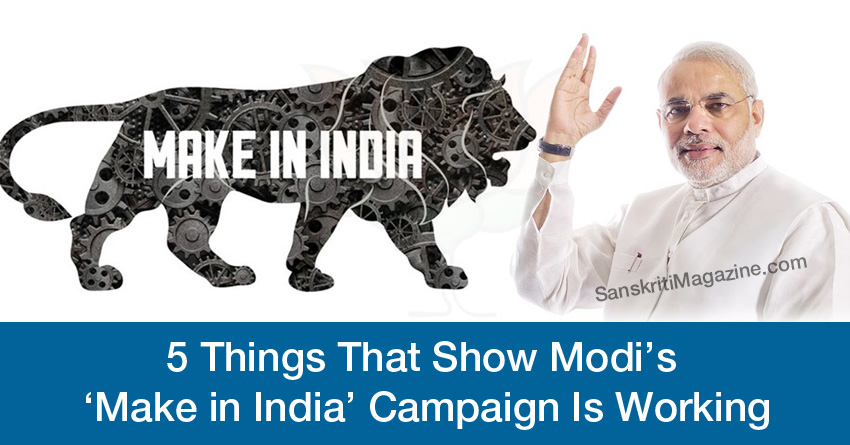BY ANANT VIJAY KALA (The Wall Street Journal)
Indian Prime Minister Narendra Modi launched his ambitious “Make in India” program last September, pledging to lower barriers to doing business and promote foreign investment. He is hoping to transform Asia’s third-largest economy into a manufacturing powerhouse like China.
It has been almost a year since the program was launched, so it’s fair to ask if it has yielded any results.
While many international executives and investors have complained Mr. Modi and his party have not used their rare majority in Parliament to ram through some much-needed reforms, that hasn’t stopped them from making big new bets on India as other emerging markets have fallen out of favor. Here are five things that show Mr. Modi’s campaign is gaining traction.
FDI is surging
Foreign direct investment between October and May was up 40% to $23.7 billion from the same period a year earlier. Net investments by foreign institutional investors, or the money coming through financial markets, totaled $40.92 billion in the fiscal year ended March 31, roughly seven times as much as in the prior year.
Industrial production is warming
The pick-up in investments is starting to show in the country’s industrial production numbers. Official data show India’s industrial production rose an average 2.7% year-over-year in the seven month period from October to May. Nothing spectacular one may say. But it is a significant step up from the measly 0.6% increase during the comparable period a year earlier.
Foxconn bet billions
Contract-manufacturing giant Foxconn last weekend announced plans to spend $5 billion on factories and research and development in the western Indian state of Maharashtra. The company is one of the many looking to produce in India as the country’s consumers spend more on electronics.
GM doubled down
General Motors Co. recently announced it will invest another $1 billion. It has struggled to gain market share in India but its decision to pour in more funds and retool so it can make cars for domestic consumption and export shows it expects things to improve.











